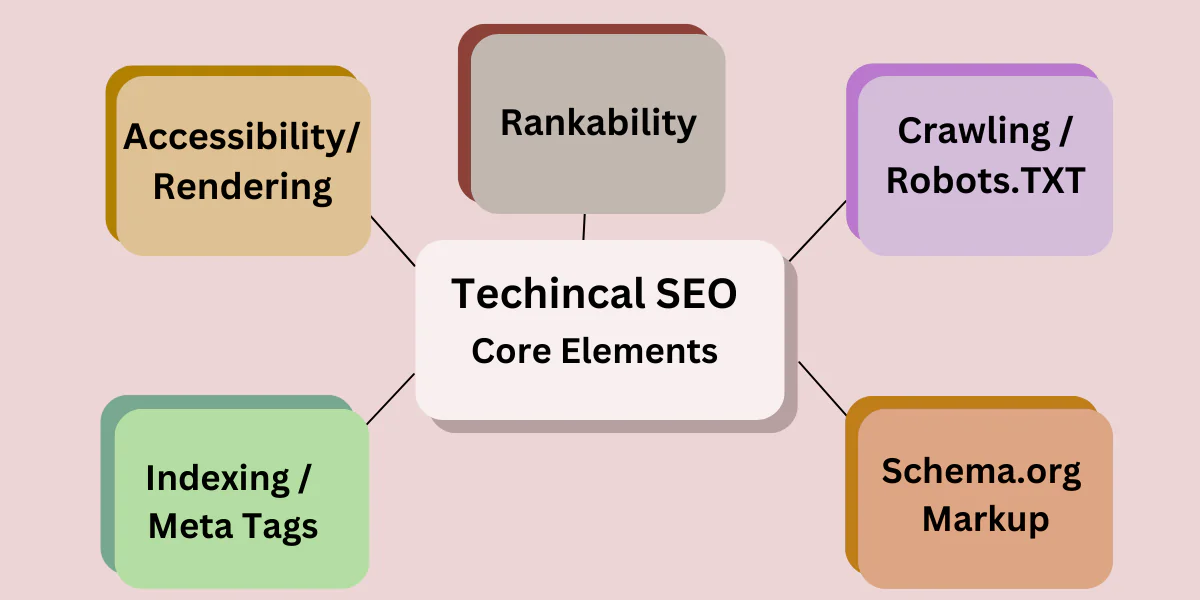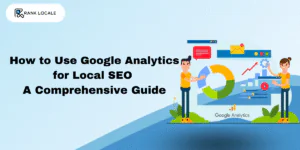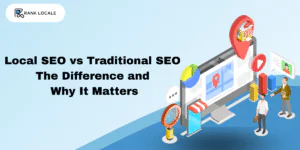Having a strong online presence is crucial for any business. One of the key factors involved in it is optimizing your website for search engines. This is what technical SEO assures. If your website is slower than usual and takes time to perform an optimal task, incurred by users, they will probably leave your website and shift to another one. A slow-speed website frustrates users and negatively impacts search engine ranking. So in this step, technical SEO plays an important role. Although technical SEO is not limited to boosting your website but contains a lot of things, which we’ll discuss in this blog post. So I want to know what exactly is technical SEO, what its core elements are, and what the tools are for optimizing it for better results in search engines.  Technical SEO is a crucial aspect of search engine optimization. Its main purpose is to optimize any website for search engine ranking and visibility. It’s considered the backbone of your website for optimal performance. It optimizes website speed, structure, coding, and other important elements to crawl and index your website fastly and quickly.
Technical SEO is a crucial aspect of search engine optimization. Its main purpose is to optimize any website for search engine ranking and visibility. It’s considered the backbone of your website for optimal performance. It optimizes website speed, structure, coding, and other important elements to crawl and index your website fastly and quickly.  The importance of technical SEO for any website is significant. It ensures that your website is free from any technical issues, easy to navigate, and can easily be understood by users and Google for ranking it. Many website owners, although they know that it’s important, ignore it because it’s complicated and needs a lot of understanding, skills, and the right strategies to execute it for higher performance. But besides this complexity, it provides long-term benefits for your website to rank and enhance its visibility. The more ranked and visible your website is for visitors, the more traffic you’ll generate. This also helps you convert these visitors or potential lead generators into customers and earn more revenue.
The importance of technical SEO for any website is significant. It ensures that your website is free from any technical issues, easy to navigate, and can easily be understood by users and Google for ranking it. Many website owners, although they know that it’s important, ignore it because it’s complicated and needs a lot of understanding, skills, and the right strategies to execute it for higher performance. But besides this complexity, it provides long-term benefits for your website to rank and enhance its visibility. The more ranked and visible your website is for visitors, the more traffic you’ll generate. This also helps you convert these visitors or potential lead generators into customers and earn more revenue.  While understanding technical SEO, it’s important to know about the four pillars of it. But before knowing these core elements, make sure to do technical SEO auditing to identify and inspect any critical issues on your site. These core elements in the technical SEO checklist are:
While understanding technical SEO, it’s important to know about the four pillars of it. But before knowing these core elements, make sure to do technical SEO auditing to identify and inspect any critical issues on your site. These core elements in the technical SEO checklist are:

What is Technical SEO?
 Technical SEO is a crucial aspect of search engine optimization. Its main purpose is to optimize any website for search engine ranking and visibility. It’s considered the backbone of your website for optimal performance. It optimizes website speed, structure, coding, and other important elements to crawl and index your website fastly and quickly.
Technical SEO is a crucial aspect of search engine optimization. Its main purpose is to optimize any website for search engine ranking and visibility. It’s considered the backbone of your website for optimal performance. It optimizes website speed, structure, coding, and other important elements to crawl and index your website fastly and quickly. Why is Technical SEO Important?
 The importance of technical SEO for any website is significant. It ensures that your website is free from any technical issues, easy to navigate, and can easily be understood by users and Google for ranking it. Many website owners, although they know that it’s important, ignore it because it’s complicated and needs a lot of understanding, skills, and the right strategies to execute it for higher performance. But besides this complexity, it provides long-term benefits for your website to rank and enhance its visibility. The more ranked and visible your website is for visitors, the more traffic you’ll generate. This also helps you convert these visitors or potential lead generators into customers and earn more revenue.
The importance of technical SEO for any website is significant. It ensures that your website is free from any technical issues, easy to navigate, and can easily be understood by users and Google for ranking it. Many website owners, although they know that it’s important, ignore it because it’s complicated and needs a lot of understanding, skills, and the right strategies to execute it for higher performance. But besides this complexity, it provides long-term benefits for your website to rank and enhance its visibility. The more ranked and visible your website is for visitors, the more traffic you’ll generate. This also helps you convert these visitors or potential lead generators into customers and earn more revenue. What are the Core Elements of Technical SEO?
 While understanding technical SEO, it’s important to know about the four pillars of it. But before knowing these core elements, make sure to do technical SEO auditing to identify and inspect any critical issues on your site. These core elements in the technical SEO checklist are:
While understanding technical SEO, it’s important to know about the four pillars of it. But before knowing these core elements, make sure to do technical SEO auditing to identify and inspect any critical issues on your site. These core elements in the technical SEO checklist are:1. Rankability
Ranking depends on which position your website is on SERP. This ensures how easily a website can be crawled and indexed by search engine bots. It depends on several technical SEO factors such as mobile friendliness, high-quality content and backlinks, and website speed. It contains other factors too to rank higher in search results. These are:High-quality, Relevant Content Creation
Writing high-quality and relevant content creation is the key to ranking higher in Google search results. Make sure to do relevant and targeted keyword research according to your website. Write engaging and unique content to provide uniqueness from your rivals. Additionally, unique content ranks higher in search engines, and Google provides authority to that website. Make sure while optimizing your website content, it contains a specific limited word count of 2100 to 2400 words.Title Tag and Meta Description Optimization
These are the first things a user sees when they come across your website on a search engine results page (SERP). Make sure they accurately describe your page’s content and include relevant keywords. Avoid using duplicate title tags and h1, pages that have too much text within the title tag.High-Quality Backlink
Backlinks are links from other websites that direct users to your website. They are an important ranking factor as they show search engines that your content is valuable and trustworthy. Focus on getting backlinks from authoritative sources in your industry.Internal/External Linking Structure Optimization
Internal and external links help Google crawler to understand the structure and relevancy of your website. Make sure to internally link it with the anchor text of your own website and use 1 to 2 outgoing external links of authoritative websites that contain nofollow attributes.User Engagement Metrics Optimization
In addition to monitoring technical SEO metrics for user engagement, it’s important to update them properly. This includes bounce rate, engaging CTR, different headlines and layouts so users can stay longer with your content.Structured Data Markup Implementation
Executing structured data makeup means that you’re providing additional information to Google about your website’s content. This helps enhance the click-through rate, lower bounce rate and enhance overall ranking in search results.Local SEO Optimization
Businesses that contain physical locations, should optimize for local SEO. This involves creating and optimizing a Google My Business listing, building citations on local directories, and getting positive reviews from your potential customers.E-E-A-T (Experience, Expertise, Authoritativeness, Trustworthiness) Signals Strengthening
E-E-A-T is an important concept in the Google search algorithm to evaluate the quality and credibility of your website content. By providing quality, relevant, and trustworthy data you can easily enhance the website content for ranking higher in Google search results.Image Optimization and Alt Text Use
Optimizing images and videos on your website can easily improve its visibility in Google image search results. Make sure while optimizing them to use the same file name as alt text, use dashes, and optimize the image size.Thin Content Identification and Enhancement
Thin content is in which a website provides no relevant or intended content about users’ queries. It contains a low word count, which is useless for visitors. Google penalizes those websites that contain such content. By identifying and enhancing these pages you can significantly remove such content from your site and enhance ranking.URL Structure Optimization
The URL structure is also crucial for any website’s on-page SEO. make sure the URLs are descriptive and easy to understand by users and the Google crawler itself. For this make sure you optimize it well, add the main keyword, make it concise, use hyphens instead of underscores, and avoid using special characters in it.2. Accessibility/Rendering
Accessibility may seem like a highly technical factor but it’s based on simplicity. how simple and engaging your website content is, and how easily a user can access it. It ensures that the HTML code added to your site is clean, organized, and follows the best practices to improve its accessibility and rendering for search bots.JavaScript Rendering Optimization
Google crawlers can’t easily process JavaScript. They struggle to process it in the right way but can’t. This can result in incomplete indexing of the website. With the help of JavaScript rending and optimizing it you can ensure that the website’s content is visible to Google for better ranking.CSS and Visual Content Loading
CSS and visual content can also affect the website loading speed. By reducing image size, videos, and other visual content you can significantly increase page load speed and provide a better user experience to your visitors.Browser Compatibility Checking
There are several browsers available and different users use different browsers and devices. It’s important to check that your website is compatible with all browsers and devices. If it does not fix the problem, provide a better user experience for all users visiting your website.Orphaned Pages in Sitemaps
Pages that are not linked within your website with any other pages. These pages can leave a negative impression on your SEO efforts. Additionally, Google doesn’t consider these pages to rank in search engines, which leaves a higher bounce rate. Make sure to regularly inspect your website and remove any orphaned pages from your sitemap.Critical CSS Inlining
Critical CSS is the minimum amount of CSS needed to render the above-the-fold content on your website. By inlining this critical CSS, you can reduce the number of HTTP requests and improve page load speed.HTTPS Content Loading
With the increasing concern related to online security, it’s important to use HTTPS protocol for your website. It will not only encrypt the data transmitted between user and server but also increase the positive reputation of your website by increasing your online ranking.Handling of Pop-ups and Interstitials for Mobile Users
Pop-ups and interstitials are interactive for desktop users but they are frustrating and disruptive for mobile users. It’s important to carefully use these elements, especially on mobile devices, so that users don’t get bored or leave your site quickly.Server-side Rendering (SSR) or Dynamic Rendering Setup
Sometimes mobile users don’t find smoother or interactive ways to connect with your website because of slower loading of content. To enhance website efficiency and user experience make sure to implement server-side rendering or dynamic rendering setup for mobile devices.3. Crawling
Search engine crawlers or search bots navigate your website to index it properly. For this, search bots make sure that your website is easy to understand and contains no flash and other technologies that are difficult to read. If these bots are blocked while collecting important data or crawling your website, they will not be able to index your website. There are other factors in the crawling checklist, these are:Robots.txt File
This file permits search engine bots to which pages, directories, or sections you’re allowed to crawl or which are not. For instance, some malicious bots can harm your website to crawl that you must restrict or you may set a crawling budget that you don’t want to spend on unnecessary pages.XML Sitemap
A sitemap contains a list of pages on a website. It helps crawlers to understand the structure of your website and have important information in it. This information includes when it was last updated, images, and URLs.Website Structure and Navigation
Website structure and easy navigation have a huge impact on website ranking. Make sure that your website is structured properly and whenever any visitor visits your site they can easily understand what your website is about, and experience a user-friendly interface by navigating through it.Broken Links and Redirects
Broken links are the main hindrance to performing a website well in search engines. For instance, when a user or visitor clicks on any link instead of redirecting to that intended page, an error message is shown to them. This can negatively affect your website ranking, so make sure that you regularly inspect your website for such kinds of errors.Page Load Speed
A slow page load can also be a great hindrance in off-page SEO. if a page speed is low, a higher bounce rate will have which means that users can quickly leave that website and shift to another one. So, test your website’s page load speed so that they can gain benefit from your continent instead of ignoring the content.Mobile-Friendliness
As mobile usage increases, people are more likely to be visitors to any website through their mobile devices. Also, Google first focused on mobile indexing rather than devices. Therefore, it’s essential to have a responsive design and quality mobile experience to rank well on Google’s search engine result pages (SERP).Canonical Tags
A canonical link element is a small piece of HTML code that helps search engines to easily identify the main version of the web page from those that are identical or similar to it. Usually, this happens when a single web page contains different URLs of the same content. With this element, you can remove the duplicate content and redirect the crawler to the main page, instead of showing a broken link error.URL Structure Handling
The URL structure is also crucial for any website’s on-page SEO. make sure the URLs are descriptive and easy to understand by users and the Google crawler itself. For this make sure, it contains the main keyword, concise, uses hyphens instead of underscores, and avoids using special characters in it.Secure Protocols (HTTPS/SSL security)
In this technological era, cybersecurity is becoming the main threat for website owners in case of leakage of any important information. Additionally, search engines give value to websites that contain secure protocols on their website such as HTTP and SSL. These protocols are especially used to encrypt the data transmission between a website and its visitors. It increases user trust and credibility which helps in higher search engine ranking.Internal Linking Strategy
Internal link helps Google to find, index, and understand all of the pages on your website. If you use these page’s URLs strategically, it will send page authority or page rank to important pages. In short, it’s the key to any website that wants a higher search ranking on Google.Pagination
Pagination tags are a method in which the content is divided into pages that are used for long articles or search results. It helps in improving user experience by making it easy to navigate and find specific information. However, it’s crucial to properly perform pagination so that each page can easily be crawled and indexed.Duplicate Content
As the name itself depicts the block of the same content appears on different URLs. This can happen unintentionally, especially when the same content appears on different URLs without knowing. Avoid doing so, as it can negatively impact your website’s SEO ranking.Add Breadcrumb Menus
Breadcrumb menus are a series of links that show the user’s current location within a website. They can help improve navigation and make it easier for users to backtrack or move between pages. Additionally, breadcrumb menus can also provide valuable keywords for search engines to crawl.Use of Hreflang Tags
These tags are HTML elements that are especially useful for specifying the language and Geographic targeting of a webpage. This is important when website content is written in different languages and it ensures that users are landing on the correct version of the page.5. Indexing
After crawling your website, the next step is to index your website’s web pages. This refers to how a crawling bot gains information from your site and stores it in its database. After indexing, web pages are ready to rank on SERP.Meta Tags Optimization
They are the hidden snippets of HTML code. They provide necessary information to search engines and social media channels about websites. By optimizing meta tags for mobile devices, you can increase your website’s online visibility and ranking in mobile search results.Schema.org Markup Implementation
It’s a semantic vocabulary that is used to markup your web content in such a way that’s easily understood by search engines. By executing schema markup on your website you can enhance mobile-friendliness and help search engines to better understand and categorize your content, leading to higher ranking.Correct HTTP Status Codes
It’s a special type of status code for servers that communicate with browsers and indicate the correct status of webpages. Ensuring that your mobile device contains the right status code can improve the overall organic traffic of your website.Noindex Tags Removal
These tags provide a signal or information to Google not to index such pages of your website. However, these tags also prevent mobile users from accessing or viewing important content from your website. It’s important to remove such tags from your site for the smooth performance of it.Soft 404 Errors Fixing
Soft 404 errors occur when your website doesn’t contain that webpage but still provides a “200 ok” status code. It confuses the Google search and thus lowers your website ranking. Make sure to fix these errors for the optimal performance of your website.Find and Fix Crawl Errors
Crawl errors often occur when search engines aren’t able to access specific pages of your website. This can affect website ranking and can cause hindrances in the user experience for mobile users. It’s important to fix crawling errors for smooth navigation. One of the best tools for crawling is Screaming Frog, it’s a versatile piece of crawling software.Critical Content Accessibility
With the rise of voice search and screen readers, it is important to ensure that your website’s critical content is accessible to all users, including those with disabilities. This not only improves user experience but also helps with SEO.Re-indexing Requests Via Google Search Console
If you make significant changes to your website, it’s important to request a re-indexing through the Google search console. This will initiate Google to crawl and index the updated pages, to ensure your latest changes are updated by Google.Optimization for SERP Features
With the increasing use of mobile devices, Google has now started to prioritize displaying SERP features (such as featured snippets and knowledge panels) in search results. To optimize for these features, make sure to structure your content using headers and subheaders, provide concise answers to common questions, and include relevant images and videos.5 Best Technical SEO Tools

- Google Search Console: it’s a free tool provided by Google to website owners to monitor, maintain, and remove issues from their websites for better performance in Google search results.
- Screaming Frog: It’s a website crawler tool that helps in inspecting on-page SEO elements. It helps website owners crawl their websites and find any technical SEO issues such as duplicate content, broken links, missing meta tags, and more. This makes it a valuable tool for technical SEO.
- SEMrush: SEMrush technical SEO tool is a valuable tool for finding high-quality and relevant keywords, performing SEO technical audits, and analyzing backlinks and organic traffic of your website and your rivals.
- Ahrefs: It’s a powerful tool for backlink analysis, keyword research, and competitor analysis.
- Moz Pro: it’s an all-in-one tool that contains features such as site auditing, keyword research, link analysis, and rank tracking. It gives valuable insights to enhance any website’s visibility and ranking in SERP.
Additional Technical SEO Tips for Enhancing Website Ranking

- It helps to use schema markup to promote rich snippets in search engines.
- Execute SSL certification for a secure browsing experience and SEO benefits.
- Utilize Google search console and Bing webmaster tool for monitoring website performance to identify potential issues.
- Make sure to create an XML sitemap to help search engines easily crawl and index your website.
- Additionally, a mobile version of your website can also help in boosting your website performance.





